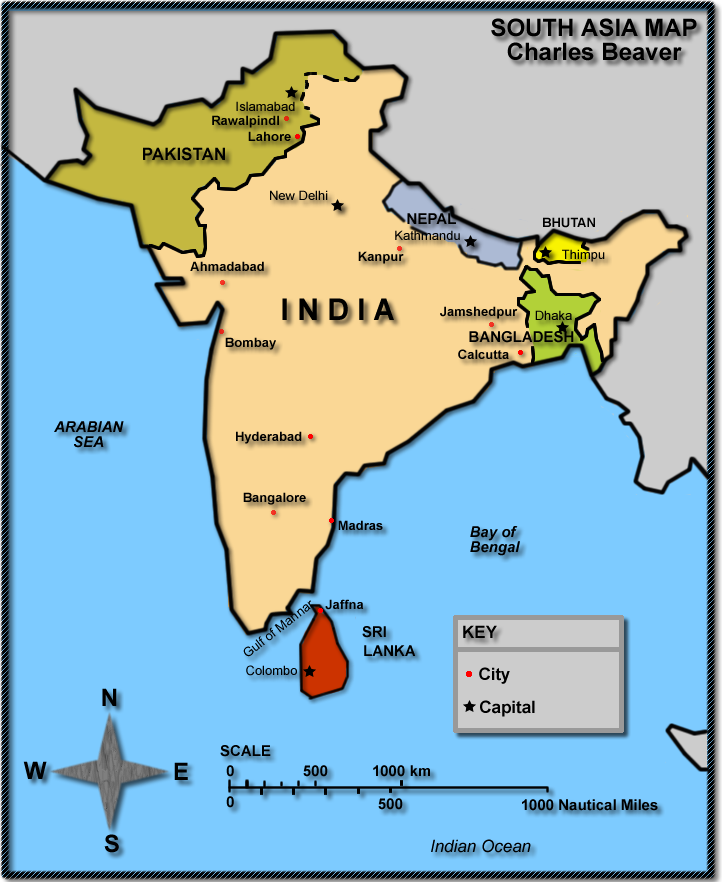The Indian subcontinent touches three large bodies of water.- It is the huge, terrestrial beak between Africa and Indonesia, his thick, rough triangular peninsula defines the Bay of Bengal to the east, the Arabian sea to the west, and the India Ocean to the south
- India's puzzleboard of 26 states holds virtually every kind of landscape imaginable.
- A great amount of mountain ranges and national parks provide ample opportunity for eco-tourism and trekking
- Its northernmost point on the Chinese border, India extends a 2000 miles to its southern tip
- of Sri Lanka, forming the Gulf of Mannar
- India's northern border is dominated mostly by Nepal and the Himalayas, the world's highest mountain chain. Following the sweeping mountains to the northeast, its borders narrow to a small channel that passes between Nepal, Tibet, Bangladesh, and Bhutan, then spreads out again to meet Burma in area called the "eastern triangle."
- Western border is defined exclusively by Pakistan. North India is the country's largest region
- the fertile plains of Punjab to the west and the Himalayan foothills of Uttar Pradesh and the Ganges river valley to the East between these two states is the capital city, Delhi.
- The southwestern extremity of the North is the large state of Rajastan, whose principal features are the Thar Desert and the stunning "pink city" of Jaipur.
- To the southeast is southern Uttar Pradesh and Agra, home of the famous Taj Mahal.
Because of India's size, its climate depends not only on the time of year, but also the location. In general, temperatures tend to be cooler in the north, especially between September and March. The south is coolest between November to January. In June, winds and warm surface currents begin to move northwards and westwards, heading out of the Indian Ocean and into the Arabian Gulf. This creates a phenomenon known as the south-west monsoon, and it brings heavy rains to the west coast. Between October and December, a similar climatic pattern called the north-east monsoon appears in the Bay of Bengal, bringing rains to the east coast. In addition to the two monsoons, there are two other seasons, spring and autumn.



No comments:
Post a Comment